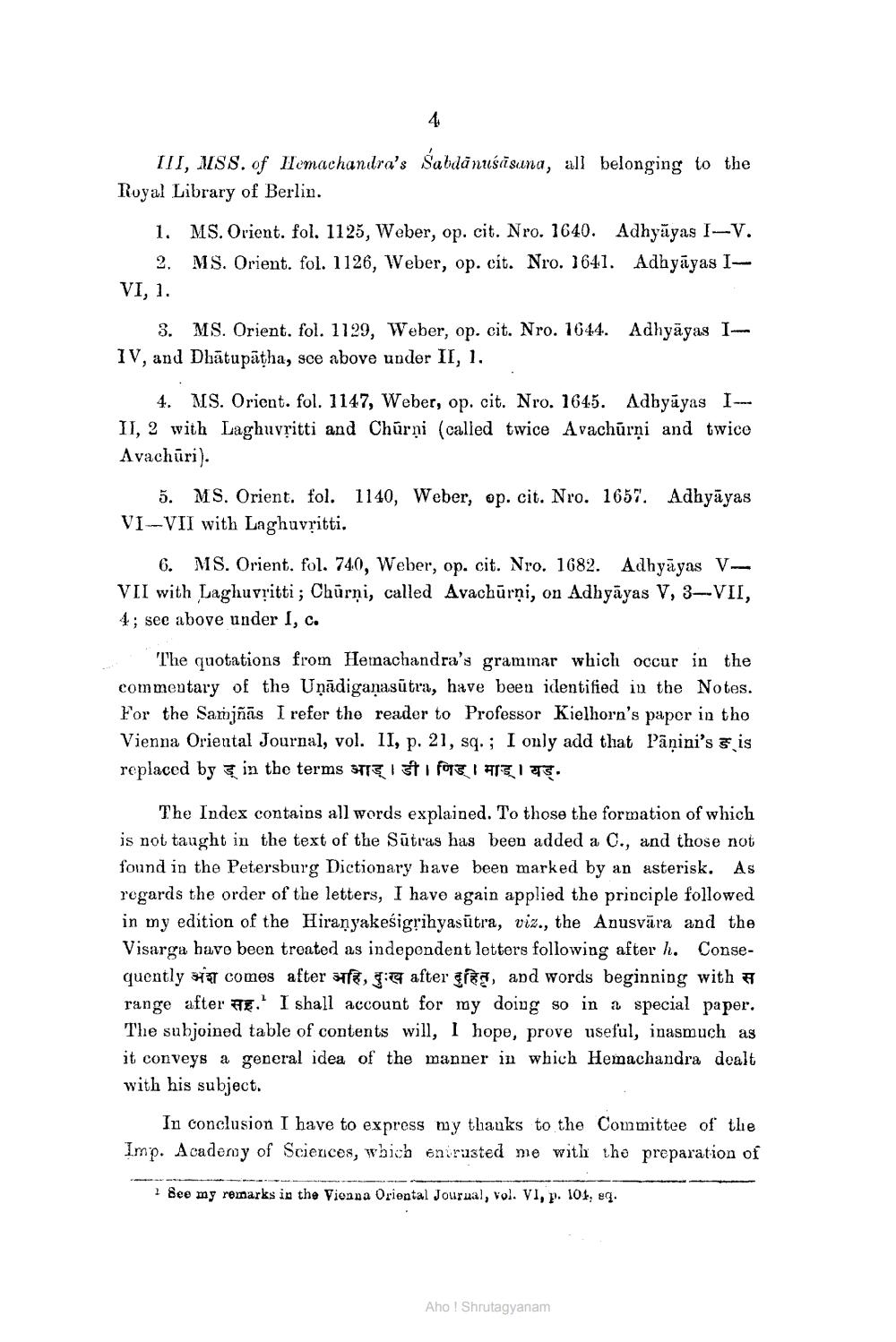________________
4
III, MSS. of Hemachandra's Śabdānusāsana, all belonging to the Royal Library of Berlin.
1. MS. Orient. fol. 1125, Weber, op. cit. Nro. 1640. 2. MS. Orient. fol. 1126, Weber, op. cit. Nro. 1641. VI, 1.
Adhyayas I-V. Adhyāyas I
3. MS. Orient. fol. 1129, Weber, op. cit. Nro. 1644. Adhyayas IIV, and Dhatupatha, see above under II, 1.
4. MS. Orient. fol. 1147, Weber, op. cit. Nro. 1645. Adhyayas III, 2 with Laghuvṛitti and Churni (called twice Avachurni and twice Avachūri).
5. MS. Orient. fol. 1140, Weber, op. cit. Nro. 1657. Adhyāyas VI-VII with Laghuvṛitti.
6. MS. Orient. fol. 740, Weber, op. cit. Nro. 1682. Adhyāyas VVII with Laghuvṛitti; Churni, called Avachurni, on Adhyayas V, 3-VII, 4; see above under I, c.
The quotations from Hemachandra's grammar which occur in the commentary of the Unadiganasutra, have been identified in the Notes. For the Samjñas I refer the reader to Professor Kielhorn's paper in tho Vienna Oriental Journal, vol. II, p. 21, sq.; I only add that Panini's is replaced by ड् in the terms आडू । डी। णिड् । माड् । यड्.
The Index contains all words explained. To those the formation of which is not taught in the text of the Sutras has been added a C., and those not found in the Petersburg Dictionary have been marked by an asterisk. As regards the order of the letters, I have again applied the principle followed in my edition of the Hiranyakeśigrihyasutra, viz., the Anusvära and the Visarga have been treated as independent letters following after h. Consequently अंश comes after अहि, दुःख after दुहितु, and words beginning with स range after. I shall account for my doing so in a special paper. The subjoined table of contents will, I hope, prove useful, inasmuch as it conveys a general idea of the manner in which Hemachandra dealt with his subject.
In conclusion I have to express my thanks to the Committee of the Imp. Academy of Sciences, which entrusted me with the preparation of
1 See my remarks in the Vienna Oriental Journal, vol. VI, p. 101, eq.
Aho! Shrutagyanam




